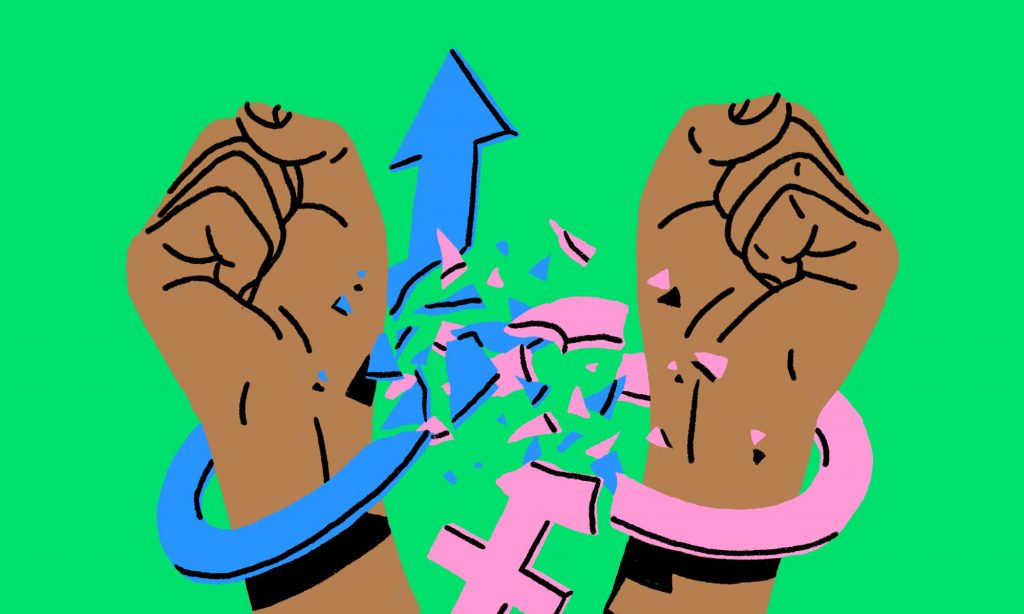The Gender Trap: How Stereotyping Reinforces Gender Blindness
Stereotype is a picture that most people paint in their minds. However, the picture painted is not necessarily a true depiction of reality. Stereotypes regarding gender refer to certain traits presumably adhered to males and females in the society which creates and justifies differences between them.
Gender stereotyping is harmful because it tends to limit the capacity of individuals to develop their abilities, pursue their professional careers and make choices in their lives. Perceptions that distinguish what is expected and what is not expected from the people of a given gender often lead to the creation of gender norms. Gender norms refer to informal rules and shared social expectations that distinguish behaviour based on gender, thereby perpetuating inequality.

The Biased Binary: Normalised Gender Bias
From the moment we are born, our assigned biological identity (male or female) immediately begins to shape our lives according to the dominant gender stereotypes in society. Studies have shown that an individual’s sense of being is predominantly determined by the way they are treated by others. Children learn at a very young age that boys and girls are different not just in terms of identity but also in various other aspects.
All of these stereotypes stem from the concept of the gender binary which views one’s sex (biological identity) and one’s gender (socially constructed identity) as binary, with individuals falling into one of two categories: male or female.
It’s a boy!
If it’s a boy, toy cars are bought for him, preferably blue and never pink because blue is considered to be a masculine color. He will learn to suppress his emotions because expressing them is considered to be “girlish”. Even when he cries he will be asked not to cry like a girl. He would be encouraged to be strong, brave, and to be tough to be a man. The boy would be expected to develop ‘male interests’ like sports and driving. He would perhaps be discouraged from cooking and helping with the household chores. Moreover, he is likely to be discouraged from choosing careers like teaching, counseling, nursing, fashion designing, etc. as they are seen to be ‘feminine’ career options. His gender defines his primary role as the breadwinner of the family.
It’s a girl!
In the case of a girl, the equation tends to change drastically. Her room is perhaps decorated with the feminine color pink and dolls are bought for her. She might be considered inferior to a boy child. While growing up, she will be allowed to be emotionally expressive. She will be trained to become ‘ladylike’. It will be expected of her to speak & laugh gently and not loudly, to be delicate and submissive to elders and most importantly, to be able to adjust. She will be encouraged to develop the ‘right interests’ like cooking, dancing, singing, tidying up the house, serving, etc. She is most likely to be discouraged from choosing careers that involve traveling and staying outdoors for a considerable amount of time. Employability is a choice for her and not a compulsion. Owing to the stereotypes prevalent in society, her gender would define her role & function at home primarily as a homemaker. She will be expected to want to become a mother and prioritize her child and family over everything else.

Gendered Media : How Indian Advertising Reinforces Stereotypes
The media is like a double-edged sword. It has the power to reinforce sexist stereotypes. On the other hand, it can act as an agent of social change and shift societal values in positive ways with better gender representation. Advertising plays a significant role in shaping consumer behavior and molding societal norms.
We conducted a survey on the role of gender stereotypes in the lives of individuals where 94 respondents were asked whether the gender stereotypes portrayed in media translate to one’s gender identification. 64 respondents believe that the stereotypical portrayal of gender roles does affect one’s gender identification.
Remember that advertisement on MTR Breakfast mixes? The mother asks what every family member wants for breakfast. As soon as she starts cooking, her hands multiply like that of a mythical Goddess, by the effects of CGI of course and she finishes cooking the different dishes without any help in no time, much to her husband’s surprise. The idolization of the mother as a goddess was meant to be empowering but ended up reinforcing the stereotype that catering to the family’s whims and fancies makes a woman a superwoman. It should be noted that no other family member helps the woman in the kitchen. Cooking, it seems, is shown to solely be the responsibility of the mother.
Then there is the series of advertisements launched by Seagram’s Imperial Blue under the ‘Men will be men’ campaign which tells stories from a male gaze and has normalised often sexist behaviour that in real-life situations might have been frowned upon. The ads stereotype men, portraying them as people who mould themselves and their behaviour just to impress women. They change their behaviour, fake emotions of love and care, pretend to help someone in need just to seek a woman’s attention. The narrative idolises problematic behaviour under the garb of ‘men will be men’ thereby reducing them to thoughtless people who are driven by lust and who only do good to seek the goodwill of the opposite sex.
A new research released by UNICEF on representation of women in advertisements titled “Gender Bias & Inclusion In Advertising In India” shows that while girls and women are well-represented as characters (49.6%) and dominate screen time (59.7%) and speaking time (56.3%), it is mostly to sell domestic and beauty products to female consumers. Female characters are more likely to be shown doing the following activities than male characters:
- Shopping (4.1% compared with 2.3%).
- Cleaning (4.8% compared with 2.2%).
- Being involved in the purchase or preparation of meals (5.4% compared with 3.9%).
This is how the presence of women in ads in India reinforces traditional gender roles leading to the intergenerational transfer of gender norms to children.

Hope For A Generation Without Gender Norms
I believe gender norms and stereotypes were created with the aim of confining people within certain socially constructed boxes. As someone who longs to change the world one reality check at a time, I think that acknowledging and addressing the existence of gender norms and stereotypes is the first step towards relinquishing them. People who fail to do that continue to suffer from what is known as ‘gender blindness’ wherein they choose not to see the differences between the genders prevalent in society.
We are the ones who determine our own gender identity based on our choices of self-expression. It is time that we start looking at gender as a spectrum of fluid identities rather than two different sets of ideals that contradict one another.
Written by: Maniparna Sen
Edited by: Saairah Mehta
Cover illustration by: Gurleen Kaur
Author

